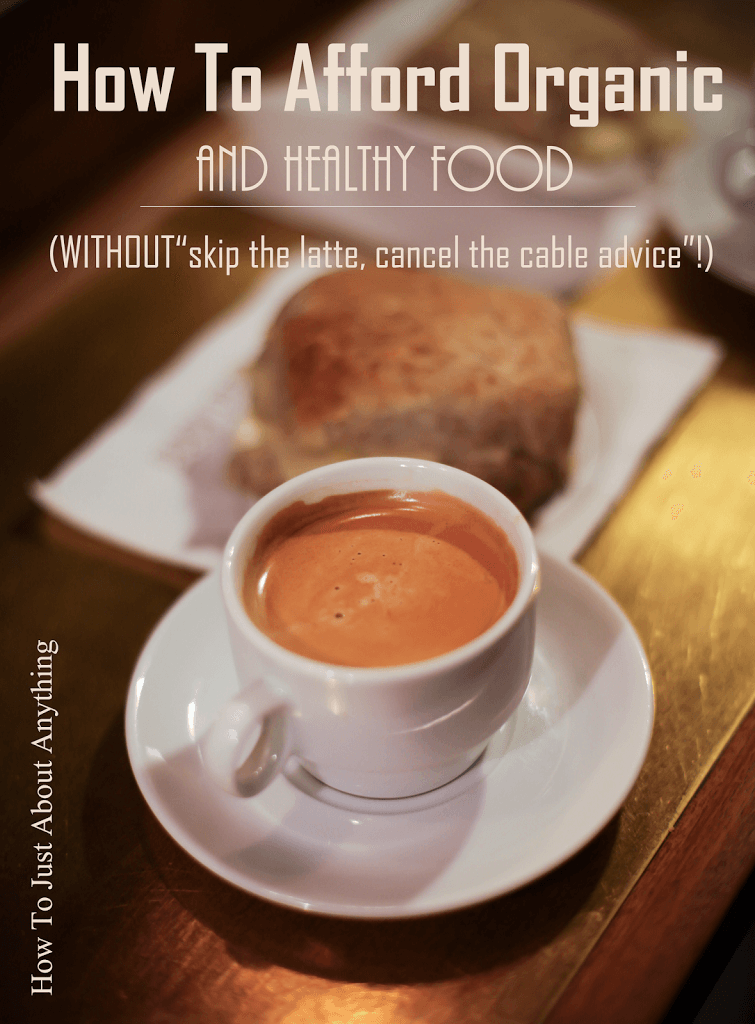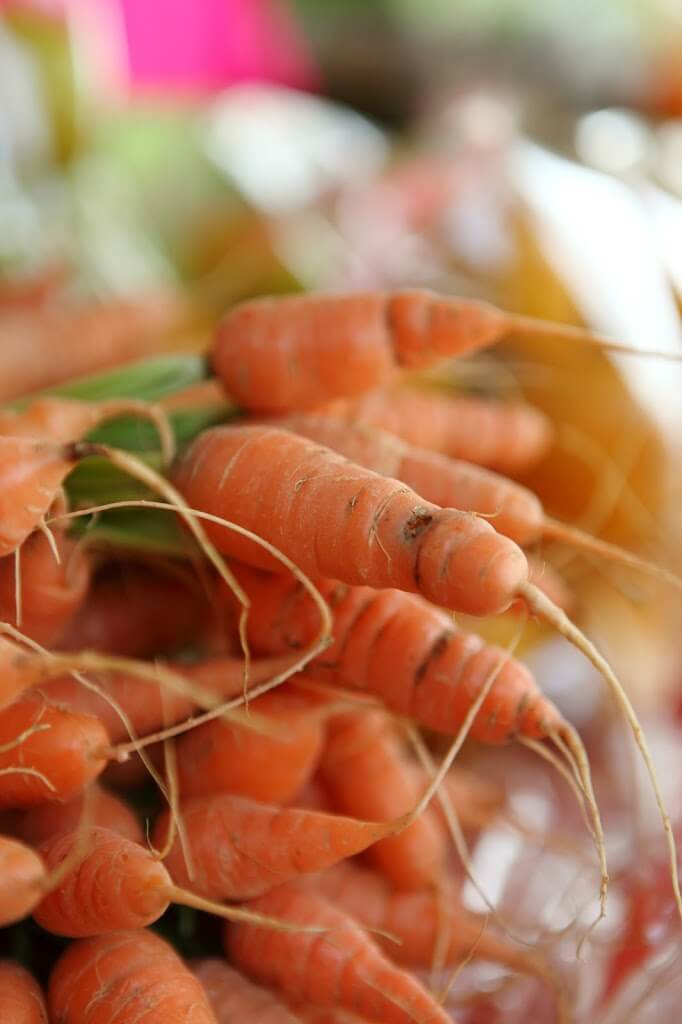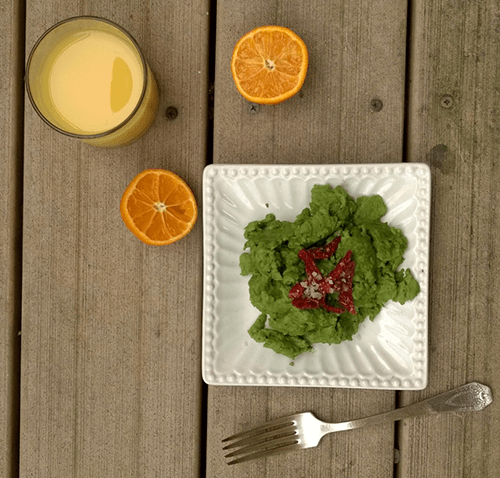(Part 2) – Want to be able to afford healthy food, but feel like it’s not in your budget. And tired of hearing to just skip the latte, when you can’t afford the $5 latte anyways?
In case you missed the first part of this series, I’ve given some of my best tips for how I (and you) can save some serious dough when it comes to buying healthy food. Read part 1 here.
Here are some other ways to save money while buying organic and natural foods!
Have a Cow
If you have the freezer space (which is a worthwhile investment), this is a good way to stock up on meat. Buying a half or even a whole cow will really reduce the cost per pound. You can also split the investment with another family (or two or three) if you don’t want that much meat.
Don’t buy Cultured and Fermented Products
Milk kefir and kombucha are a tasty way to majorly up your probiotic intake. But buying the individual bottles at the store will cost you about $3 per bottle. For a modest family of four drinking one each for just five days a week will cost around $60!
You can purchase starter cultures from Cultures for Health or see if someone on a natural health Facebook board would be willing to share with you. I’ve gotten kefir grains and kombucha scobies for just the cost of shipping before from fermenting and culturing groups on Facebook.
Yogurt is another really simple one to make. A few containers of plain, organic yogurt at the store is an expensive weekly investment. I just buy one container every few weeks and use 1/4 cup at a time to make a weekly quart of yogurt. Find some instructions for how to make it in your crockpot here.
Selectively Buy Organic Produce
Switching over from conventional to purely organic produce can cost you twice as much. Every year the Environmental Working Group updates the “dirty dozen” list. This list discloses which items have the most pesticides used on them and are better to buy organic.
By only buying organic if it’s listed on the dirty list saves quite a bit. Apples are #1 on the list for pesticide contamination so we always buy those organic, but mushrooms are all the way at #36, so we just buy those conventional.
Find a Discount Grocery Store
These are harder to come by in certain areas, but if you have a good one in your area it’s worth it’s weight in gold! Discount grocery stores will receive dented or slightly damaged but still perfectly useable pantry items from local stores.
They also carry items that have recently expired or just didn’t sell well at another store. I’ve bought Annie’s mac and cheese for 25 cents a box, canned goods for 30 cents each and gourmet vanilla extract for 90% off!
Spoiled Food!?
And before you dismiss the idea of buying “expired” items, manufacturers themselves say these dates indicate maximum freshness, not that the product has gone bad.
“The “sell by” date is the last day the item is at its highest level of quality, but it will still be edible for some time after.”
“This (best buy date) refers strictly to quality, not safety. This date is recommended for best flavor or quality. It is not a purchase or safety date.”
Artisan cheeses at the store will sometimes even have a note on them indicating that the item will taste BETTER a week or so after the “sell by” date.
I was able to have a conversation with a former manager at Thomas brand English muffins and he had some eye opening facts to disclose about the food industry. One was that manufacturers will put a 1 year expiration date on a canned good even though it will actually last for several years. This saves them money by ensuring they don’t have to pull 3x as much of their stock off the shelves in the event of a recall. The dates given are just an example, but the point remains the same.
This being said I NEVER buy expired grain items, like cornmeal and flour. These are already prone to going rancid shortly after they’re ground.
Just use your own judgment and common sense.
Price Match
This is a great way to buy natural foods, not necessarily organic, but it’s still well worth mentioning. Stores like Aldi’s and Trader Joe’s have very reasonable prices, but if you don’t have any in your area, you can still reap some of the benefits.
Aldi’s runs a weekly online ad that includes steeply discounted produce, like avocadoes for 25 cents or melons for $1. Our closest Aldi is half an hour away so I’ll just bring the printed ad into Walmart, select the same produce from there and show the cashier the ad for a price match. I’ve bought bags of produce this way for just a few dollars.
So what would a day’s worth of meals look like using some of these tips?
Breakfast– Homemade yogurt and fruit (raw milk $1 a quart, 25 cents for 1/4 cup of yogurt starter), 2 cups of fruit bought in bulk from the farmer’s market (about $1.25 per pound). Total = $2.50 for four, or 63 cents a serving.
Lunch– Salad with homegrown lettuce and herbs. (practically free) Chicken and veggie soup.Veggies bought from Aldi or price matched. Leftovers from a whole chicken and homemade stock from the bones. At $7 a chicken, 1/3 of the chicken would be $2.30. A few carrots and potatoes for $1. Total = $3.30 for four, or .83 cents a serving.
Supper– Chili with beans, an onion, homemade chicken stock and grassfed ground beef bought in bulk (about $2.50 for one half of a pound). Total = $4.50 for four, or $1.12 a serving.
If you stayed within this general price range for meals by following the frugal tips, you could easily spend less than $20 per person on food a week!
How do you save money on your grocery bill?
Get FREE access to my newsletter, exclusive coupon codes, and links to my recommended natural living products!
Shared at: Waste Not Want Not



I just hopped by from Waste Not Want Not to see your tips and I am glad I did. I prefer to buy organic food but sometimes it is not affordable or available at that time. That’s when the Dirty Dozen list really comes in handy and I buy a few items that are on the clean 15 list and stay on budget. It also helps to make my own nut milks, fermented foods and grow my own sprouts. Thanks for sharing these handy tips. I’m pinning and sharing.
Great tips! I make a lot of my own fermented stuff, too, and just tried making kimchi for the first time this week. It turned out really good, and it was so easy! Thanks for sharing this on Waste Not Want Not Wednesday, I’m pinning pinning and sharing 🙂